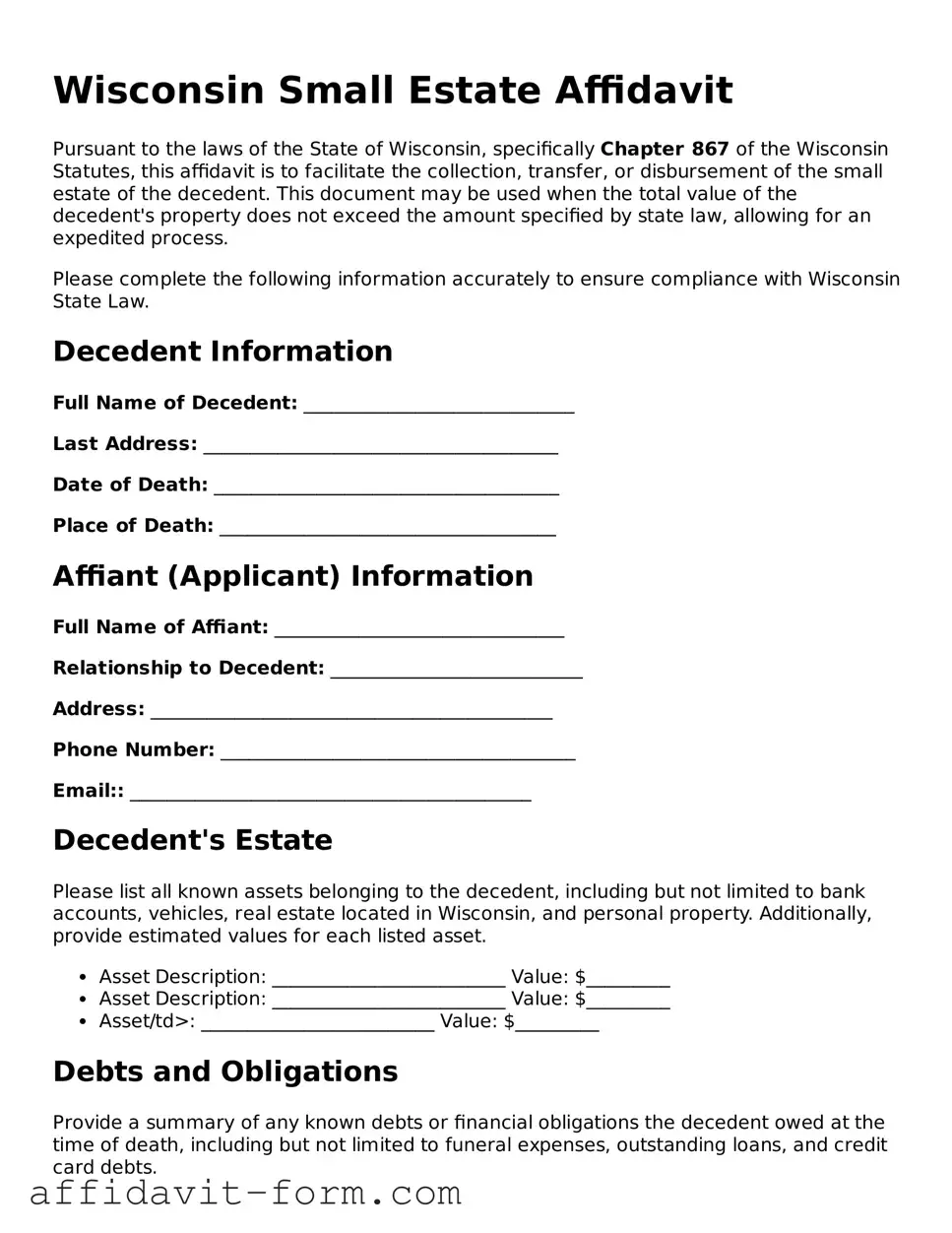Wisconsin Small Estate Affidavit
Pursuant to the laws of the State of Wisconsin, specifically Chapter 867 of the Wisconsin Statutes, this affidavit is to facilitate the collection, transfer, or disbursement of the small estate of the decedent. This document may be used when the total value of the decedent's property does not exceed the amount specified by state law, allowing for an expedited process.
Please complete the following information accurately to ensure compliance with Wisconsin State Law.
Decedent Information
Full Name of Decedent: _____________________________
Last Address: ______________________________________
Date of Death: _____________________________________
Place of Death: ____________________________________
Affiant (Applicant) Information
Full Name of Affiant: _______________________________
Relationship to Decedent: ___________________________
Address: ___________________________________________
Phone Number: ______________________________________
Email:: ___________________________________________
Decedent's Estate
Please list all known assets belonging to the decedent, including but not limited to bank accounts, vehicles, real estate located in Wisconsin, and personal property. Additionally, provide estimated values for each listed asset.
- Asset Description: _________________________ Value: $_________
- Asset Description: _________________________ Value: $_________
- Asset/td>: _________________________ Value: $_________
Debts and Obligations
Provide a summary of any known debts or financial obligations the decedent owed at the time of death, including but not limited to funeral expenses, outstanding loans, and credit card debts.
- Debtor: _________________________ Amount Owed: $__________
- Debtor: _________________________ Amount Owed: $__________
Declaration
The undersigned affirms that the information provided in this affidavit is true and correct to the best of their knowledge, understanding, and belief. The affiant acknowledges their obligation to distribute the assets of the decedent's estate to rightful claimants in accordance with Wisconsin Statutes and understands the penalties for misrepresenting facts or unlawfully withholding assets.
Signature of Affiant: _______________________________
Date: _____________________________________________
Notary
This document was acknowledged before me on ______________________ by _________________________________________ (name of affiant), who is personally known to me or who has produced ______________________________ (type of identification) as identification.
Signature of Notary Public: ________________________
Printed Name: ___________________________________
Date: ___________________________________________
Commission Expires: ____________________________
